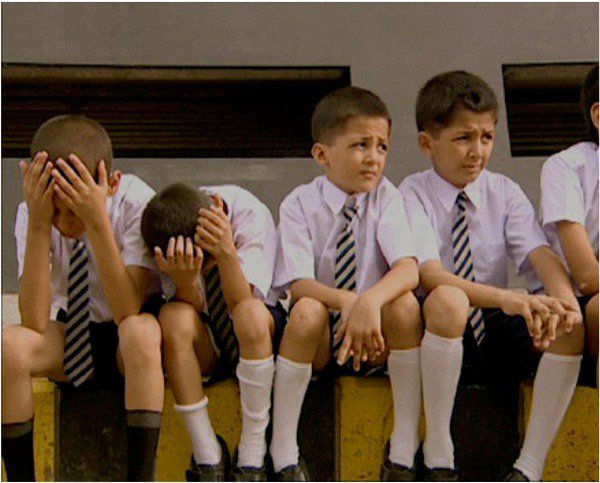On Dithering
dal 23/5/2013 al 3/8/2013
Segnalato da
Bani Abidi
Pilar Albarracin
Robert Barry
Rolf Dieter Brinkmann
Mircae Cantor
Carlfriedrich Claus
Jacob Grimm
Wilhelm Grimm
Herbordt/Mohren
Runa Islam
Anna K. E.
Gerald Van Der Kaap
Mobile Academy
Hannah Hurtzig
Karin Harrasser
Chris Kondek
Joseph Vogl
Christian Morgenstern
Anna Oppermann
Dan Perjovschi
Lia Perjovschi
Andreas Schulze
Stefanie Seibold
Jan-Peter E. R. Sonntag
Jean-Marie Straub
Daniele Huillet
Iris Dressler
Hans D. Christ
23/5/2013
On Dithering
Wurttembergischer Kunstverein WKV, Stuttgart
Motives of Suspension, Suture and Digression. In contemporary art, dithering is found not only as a motif. The exhibition seizes upon dithering mainly as a methodology and reflects it along motivs of suspension and suture, digression and derive.

Artists:
Bani Abidi
Pilar Albarracín
Artic. Texte aus der fröhlichen Wissenschaft
Robert Barry
Rolf Dieter Brinkmann
Mircae Cantor
Carlfriedrich Claus
Sigmund Freud
Jacob und Wilhelm Grimm
Herbordt/Mohren
Runa Islam
Anna K. E.
Gerald Van Der Kaap
Mobile Academy (Hannah Hurtzig, Karin Harrasser, Chris Kondek) / Joseph Vogl
Christian Morgenstern
Anna Oppermann
Dan Perjovschi
Lia Perjovschi
Andreas Schulze
Stefanie Seibold
Jan-Peter E. R. Sonntag
Jean-Marie Straub / Danièle Huillet
Curators: Iris Dressler, Hans D. Christ
Dithering is like an intellectual perpetuum mobile, like a bachelor
machine grinding to a halt. (Agentur Bilwet)
Hesitating, faltering, lapsing, pausing, wavering in decisions, treading water, lacking
direction: all of the above are moments and states characteristic of “zaudern”
(dithering), which in our thoroughly economized world are considered disruptive, if not
downright threatening. They block, or so people say, the ability to act, the smooth
course of events, and thus also productivity and growth.
The philosopher and literary scholar Joseph Vogl, in contrast, views dithering not as
annihilation but as a “shadow of action,” as an “event backlog within the event.” At this
threshold between action and non-action, an interval of pure “creative potency and
contingency” emerges. In this sense, dithering is something that settles along joints,
threshold and hinges, at places that branch and at the branches of the branchings—
where anything is still possible and anything is questioned. At the same time, Vogl
references the resistance inherent to dithering. Indeed, it turns “against the
irrevocability of judgments, against the finality of solutions, against the certainty of
consequences . . . and the weightedness of results . . . Dithering harbors the suspicion
of complexity; it is aligned to an arithmetic that ranges from the hundreds to the
thousands” (Joseph Vogl).
In the arts, motifs of dithering are seemingly ubiquitous: be it Hamlet’s question of “to
be, or not to be,” the Grimm Brothers’ “Birnli” (little pear) that simply does not want to
fall off the tree, or Bartleby the Scrivener who incessantly “prefers not to.” Or be it
Christian Morgenstern’s snail, who cannot decide weather he should stay in its house
or leave it. “The snail gets so entangled with his thoughts, or, rather, the thoughts run
away with him so that he must postpone the decision” (Christian Morgenstern).
Digression and suspension seem to be the two poles of dithering.
In art, and especially in contemporary art, dithering is found not only as a motif, but
also as an aesthetic method and structure. This is the case, for example, in cinema as
the so-called “dead time” (temps mort), the empty moment and state of limbo
introduced by Michelangelo Antonioni, where the story does not continue; or in video
art, this is the loop that perpetually shifts the beginning and the end of a narrative.
Further, artists work with broadly ramified systems of reference—ones that range “from
the hundreds to the thousands”—and also with methods of repetition, deferral, and
permutation. They produce multiple readings and repeatedly subject the beholder to
situations of undecidability. They are dealing with the digressive in lieu of the
purposeful, with the unexpected in lieu of the calculable, with the equivocal in lieu of
the definite. From a certain slant, dithering may also be considered a queer method.
The exhibition On Dithering, which runs from May 25 to August 4 at the
Württembergischer Kunstverein, seizes upon dithering mainly as a methodology of
contemporary art and reflects it along motivs of suspension and suture, digression and
derive.
Supported by
Kulturamt der Stadt Stuttgart
Ministerium für Wissenschaft, Forschung und Kunst des Landes Baden-Württemberg
British Council
ProLab, Stuttgart
Image: Bani Abidi (born 1971 in Karachi, lives in Berlin). Reserved, 2006. Two channel video, 9 min.
Press conference Friday, May 24, 2013, 11 a.m.
Opening Friday, May 24, 2013, 7 p.m.
Württembergischer Kunstverein Stuttgart
Schlossplatz 2, D – 70173 Stuttgart
Hours
Tue, Thu-Sun: 11 a.m. – 6 p.m., Wed: 11 a.m. – 8 p.m.
Entrance fees
5 Euro / 3 Euro reduced / Members free



